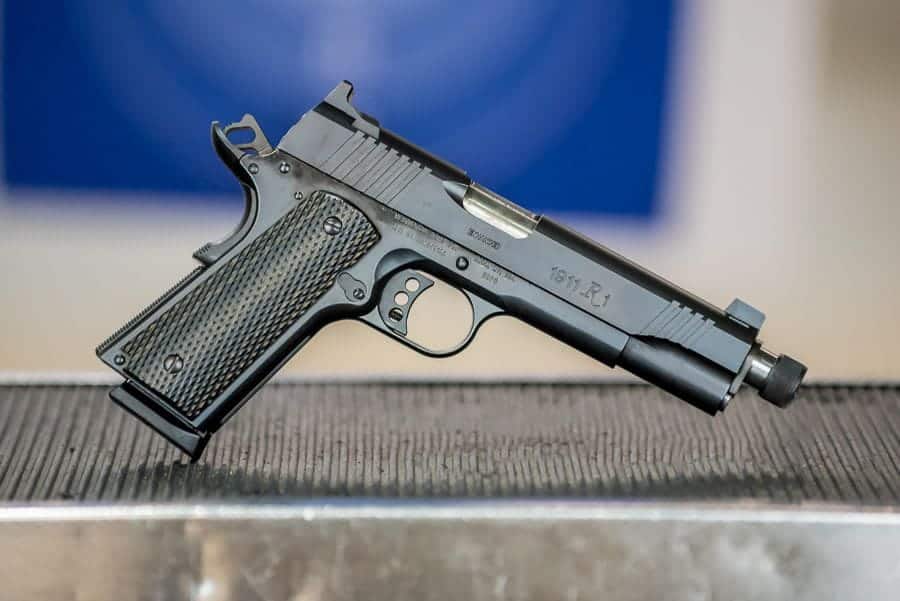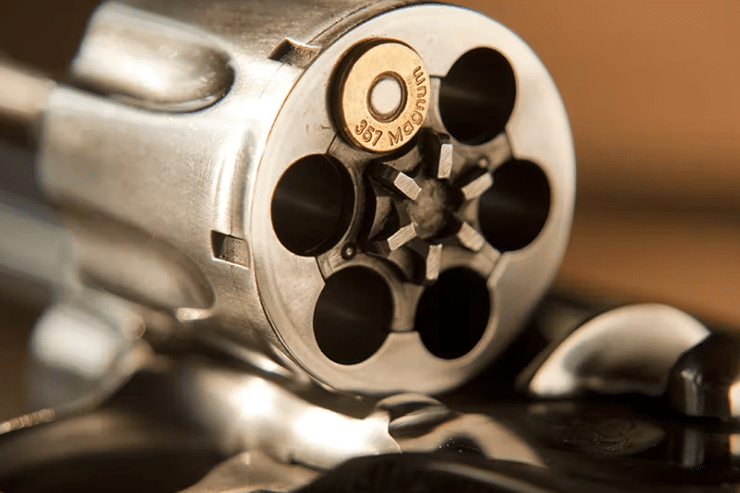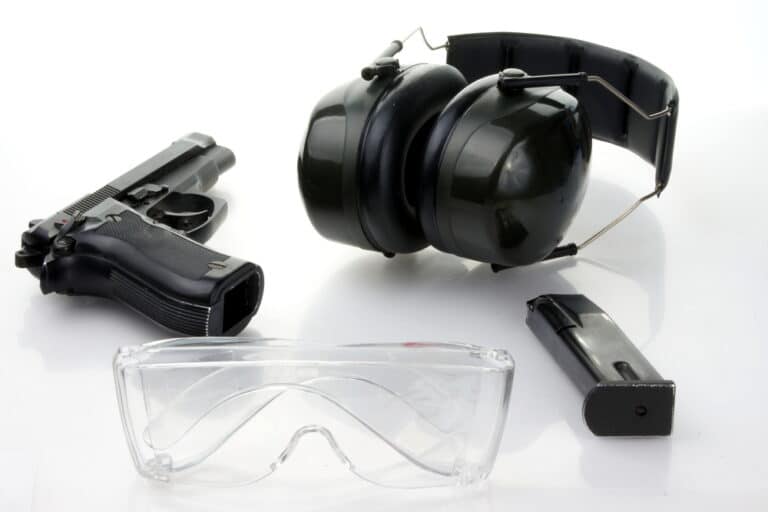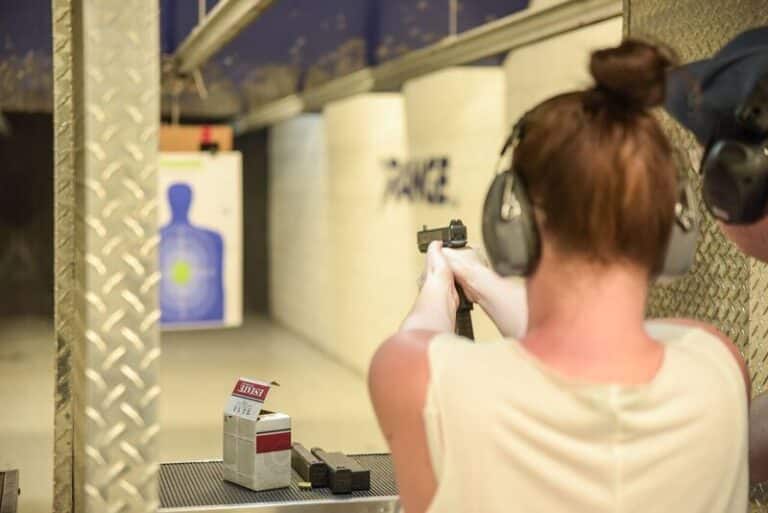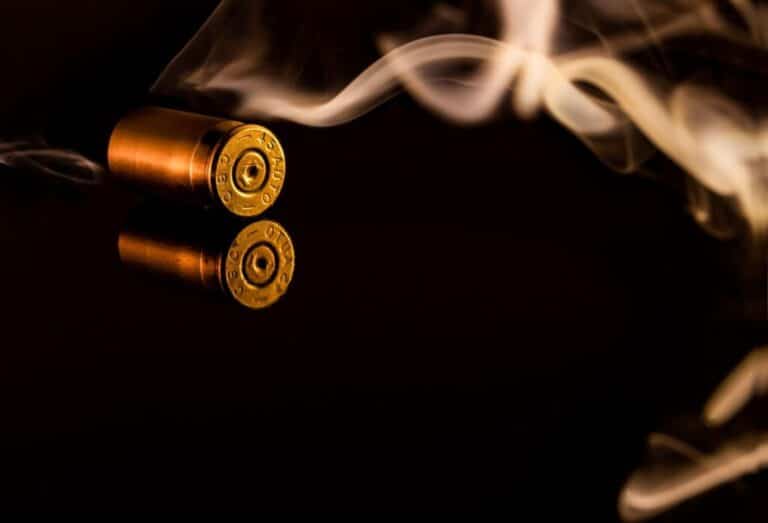10 Tips for First-Time Pistol Shooters

Going shooting for the first time can be both exciting and a little intimidating. However, remember, every great sharpshooter was once a first-time shooter. There’s nothing wrong with trying something new and getting out of your comfort zone.
However, pistols are tools, and they must be respected at all times. That doesn’t mean you can’t have fun in the process. It’s just important to go to a professionally run shooting range staffed by experienced firearms instructors.
Once you’ve found a reputable range, there are a few more things you’ll need to do to prepare. To help, we’ve created this list of 10 pistol shooting tips for first-timers.
1. Make Safety Your Top Priority
We’ll kick off our list of tips for shooting with the most important thing you need to know. Safety must always be on your mind. If you’ve never shot a gun before, we recommend a pistol safety class. Your instructor will go over practical safety rules, including where to point a weapon, how to set up your stance, how to load and unload a magazine, and more.
Memorize the safety information your instructor covers. Remember, pistols are capable of destroying your target. Always treat guns as if they are loaded, and never point them at anything you do not intend to shoot.
2. Invest in Good Ear and Eye Protection
Most gun ranges have ear and eye protection available for rent. However, there are tons of options out there, and it’s important to choose gear that fits you just right. Having the right pair of eye protection will help you to focus on your target and deliver accurate shots. You can also avoid the frustration of having your glasses slip down your nose because they don’t fit right.
As for ear protection, there are many different variations to choose from. Simple foam ear plugs, sometimes called “foamies” by experienced range-goers, are cheap and easy to use. You simply smash them down and put one plug in each ear.
However, if you plan on shooting a lot or are going to buy your own pistol, consider investing in over-the-ear or in-ear options. High-end ear protection uses electronic noise-canceling capabilities to block out sounds above a certain decibel level. These devices are handy because they still allow you to hear your instructor while canceling out the ear-ringing bang of a firearm.
3. Find an Experienced Instructor
Speaking of instructors, you should find someone trustworthy to teach you how to shoot. Don’t rely on a friend of a friend or acquaintance to teach you the basics of pistol shooting. Just because someone owns a firearm does not mean they have the experience or background necessary to teach you good marksmanship.
Find out more about an instructor’s background. How long have they been shooting? What sort of formal training do they have? It’s vital to choose an instructor you are confident in so you will take their lessons seriously.
A great instructor will also help you to learn your way around Nevada firearms laws as outlined in the Nevada administrative code. However, doing your research is important, as you will be responsible for following relevant laws as a gun owner.
4. Choose a Manageable Caliber and Weapon
Shooting a hand cannon that you’ve seen your favorite action star wield in the movies can be fun and exciting. However, you probably shouldn’t make Dirty Harry’s revolver or the monstrous S&W 500 the first pistol you ever shoot. Choose a weapon and caliber that is manageable and user-friendly.
For most new pistol shooters, a semi-automatic pistol chambered in a common caliber, like 9mm, will be a good choice. According to Ammo.com, the 9mm dates back to 1901. The century-old design provides plenty of recoil to deliver an authentic shooting experience without beating up your hands or becoming uncontrollable.
Additionally, if you decide to purchase your own pistol in the future, the 9mm is one of the most widely available cartridges out there. Once you’ve learned the basics, The Range 702 team will be more than happy to let you try some of the bigger, beefier pistols in our weapons vault.
5. Get to Know the Nomenclature of Your Pistol
Nomenclature refers to the term or name applied to specific parts of your handgun. Your instructor should go over the basic vocabulary regarding your pistol at the beginning of the lesson, especially if they know you are a first-time shooter. If they don’t, ask them to review key parts of the weapon.
Keep in mind that you don’t need to know where every pin, spring, or other tiny component is located. Focus on the basics, like where the safety is located and how to engage/disengage it, how to eject your magazine, and how to chamber a round.
Do your best to learn the proper names of vital components and how they work so you can use the gun safely. Don’t worry; range personnel won’t give you too hard of a time if you accidentally call the magazine a “clip.” However, they will want you to know how to eject the magazine, clear the weapon to ensure it doesn’t have any ammo left in it, and lock the slide to the rear.
6. Figure Out Whether You Are Left- or Right-Eye Dominant
Advanced shooters often keep both eyes open when firing, but most people close one eye to aim. To do this, you’ll need to know which eye is dominant.
Your dominant eye usually matches your dominant hand — right-handed people are often right-eye dominant, but not always. To find out which eye you favor, you can:
- Pick a small object across the room, like a light switch
- Make a diamond shape with your index fingers and thumbs
- Center the object
- Close one eye at a time
The eye that keeps the object centered is your dominant eye. The other will make the object look off-center. If your dominant eye and dominant hand are opposites, NRA Family reports that you are cross-dominant. Being cross-dominant isn’t a big deal during pistol shooting, as you can easily adjust your stance and arms to center the post in front of your dominant eye.
7. Learn How to Line Up Your Sights
After you’ve learned the basics of safety and how your gun functions, it’s time to start working on your pistol aiming technique. Most pistols have front and rear sights. The front sight is usually a single post or blade, and the rear sight typically features a pair of posts with a gap between them.
Don’t just point the weapon at your target. Put the front post over what you are aiming at and line it up between the rear sights. The front sight should be level with the rear sights (not higher or lower) and centered between the two rear posts. Your instructor will work with you on lining up your sights and reacquiring the proper sight picture after each shot.
8. Develop a Stable Grip
You need a balanced, stable grip to shoot accurately. Practice your grip and carefully set your hands in the ideal place on the pistol whenever you draw it from your holster.
Your instructor should critique and adjust your grip as needed. Pay attention to their feedback and practice your grip often until it becomes second nature.
9. Squeeze, Don’t Pull
Dry firing a gun (pulling the trigger when it’s not loaded) will help you learn how to apply even, consistent pressure to the trigger. Make sure that your gun is unloaded and you are in a safe environment before dry firing. Remove the magazine and triple-check that the chamber is empty.
Point the gun in a safe direction just in case there is a round in the chamber. Slowly squeeze the trigger and hold it there after it clicks. Practice this a few dozen times before moving on to live firing.
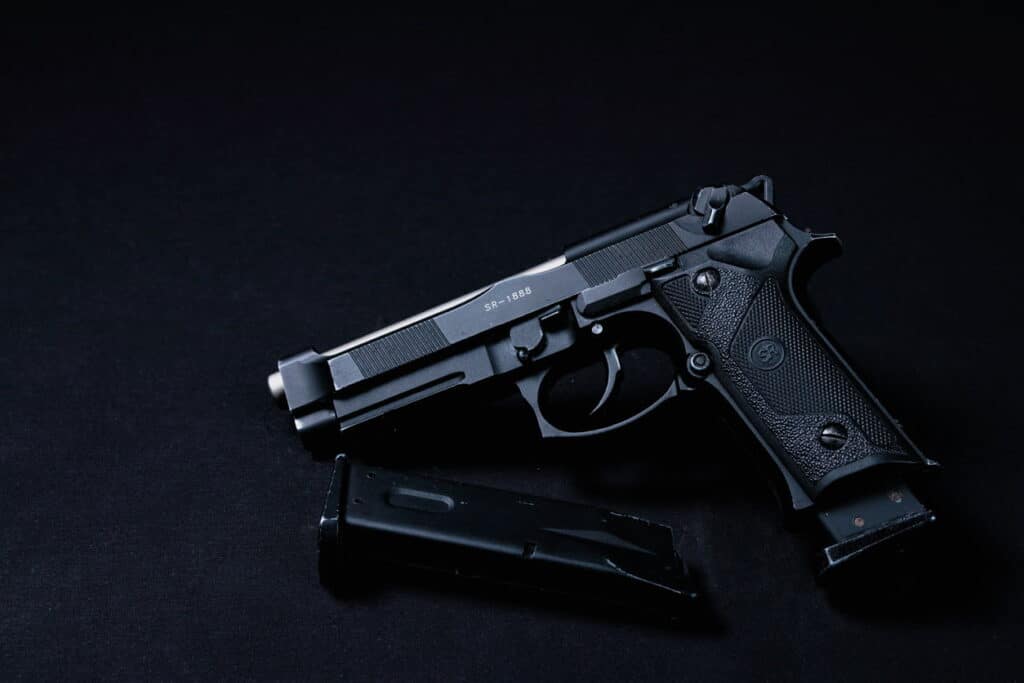
10. Build Good Habits Early
One of the best things about being a first-time pistol shooter is that you don’t have any bad habits to break. You are a clean slate and have a great opportunity to learn some sound pistol skills.
With that in mind, it’s up to you to apply the information your instructor gives you. Be consistent about stabilizing your stance, getting a good grip, and lining up your sights. Learn to do the basics well before trying to do anything fancy, like shooting with one hand or firing your gun with both eyes open.
Get Ready for Your First Range Day
Use these tips to get ready for your first trip to the range. Be safe, follow range rules, listen to your instructor, and have fun.

